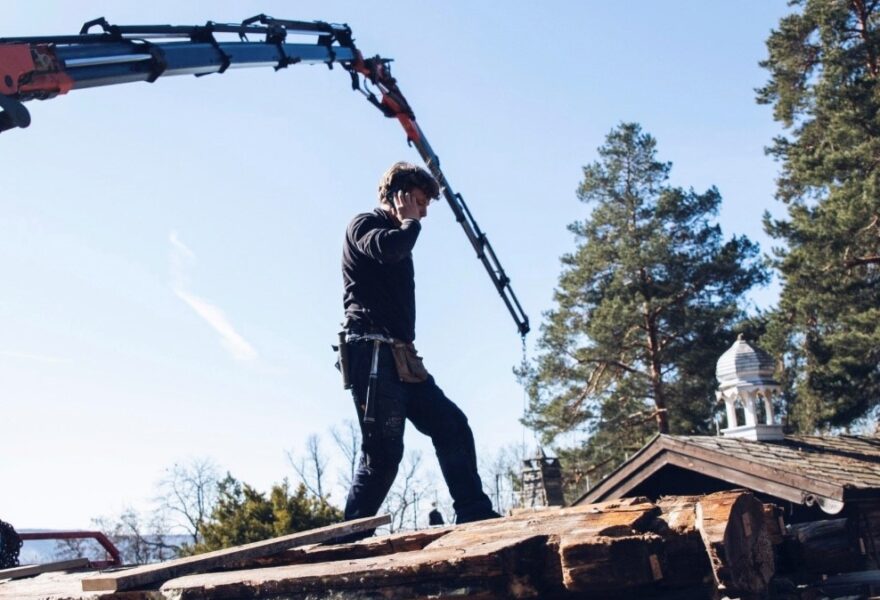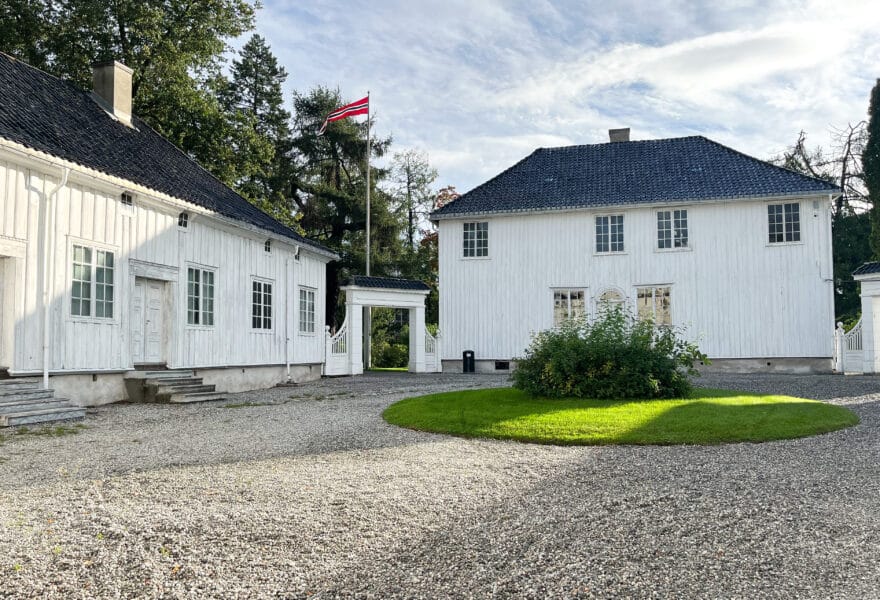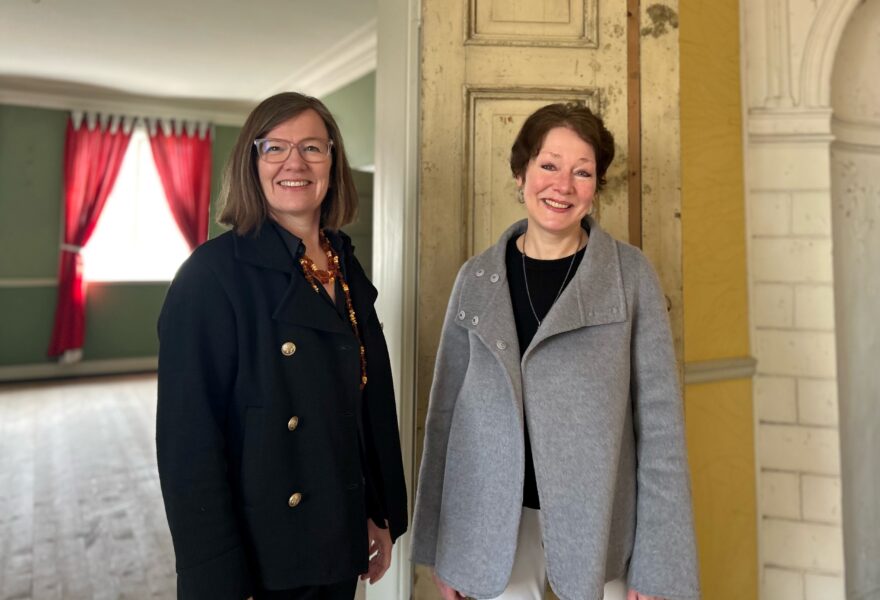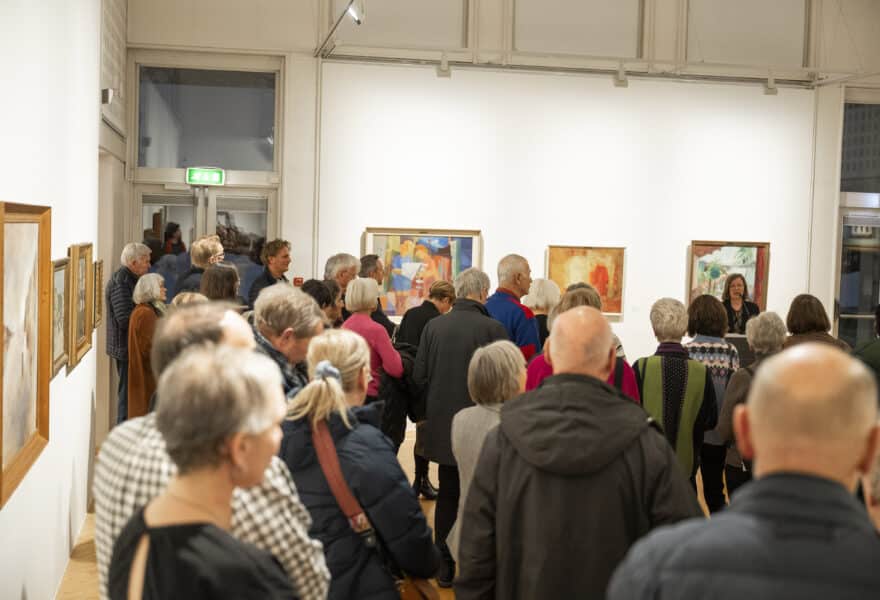
Dissemination to children and young people every day throughout the year
Every day throughout the school year, it is crowded with children and young people here at the museum. The various dissemination schemes are adapted to age, theme and curricula. During a school year, there are about 10,000 students at the museum from 7 different municipalities through DKS.
Once upon a time, the 1st step. How did people live in Norway 200 years ago? How many lived together and what did they eat? The children get to go to Hallingtunet on Marienlyst and into the old Torpostua.
Christmas in the old days, 3-4. step. How did they celebrate Christmas in the old days? What did they have to do before the party started? The children get to take part in the Christmas celebration at Hallingtunet here at Marienlyst. Inside the old Torpostua from 1830, it is decorated for Christmas. The farmer and the farmer's wife welcome you to the party! But what must we do to prevent the trolls and the elves from coming?
Sculpture, 3rd step. Chairs are the theme of this sculpture program. The students get to learn some style history and we look at chairs digitally and in our exhibitions. Many wonderfully beautiful, weird, fun, scary and comfortable chairs have been made and designed over time. After this, the students get to try their hand at chair designers. Modern art, 4th step
The students in the 4th grade receives communication in relevant exhibitions that are followed by a relevant workshop assignment. This year we visited Kai Bojesen's exhibition "Danish design for modern life" and the students got to make animated films with Bojesen characters!
Architecture, 5th step. We walk through parts of Tollbugata and on to Drammens Museum to get better acquainted with the city's history. Several of the buildings are from the 17th and 19th centuries and the owners were often the city's rich merchants and merchants. We get to know some important characteristics of the classicist style in which several of the buildings in Tollbugata are built. In the workshop at the museum, the students draw a house facade in classicist style.
Art !, 5th step. Art can be so much! We will get to know the diversity of forms of expression, painting methods, use of color and choice of motifs in Det Faste Galleri, which is a collection of art from some of Norway's foremost painters from national romanticism to expressionism. We will get to know Hans Heyerdahl in particular who painted at the end of the 19th century. In the workshop, the students create a work based on the styles we have reviewed during the communication.
Holmsbumalerne, 6th step. We visit the gallery in Holmsbuskogen in memory of the three artists; Oluf Wold Torne, Thorvald Erichsen and Henrik Sørensen. The students get to know the building, the content and the background of the artist colony. After the dialogue-based communication, the students will make a film about what they have learned.
Out in the open, 6th step. Drammens Museum offers teachers a free teacher seminar on the digital school program "Out in the open!". We show how the program can be implemented at school. We start by seeing the original paintings by Hans Heyerdahl in Det Faste Galleri. Afterwards, we watch the film together and solve the quiz. Everyone can participate regardless of step and municipality! Drammen municipality has this scheme in this year's DKS offer for 6th grade. The teaching plan is recommended as preparation for the school for 5th grade in Lier and Nedre Eiker, which is going to the museum on the DKS program KUNST.
The program is best suited for 5th - 7th grade, but also the junior high school can benefit from the offer, either as part of the arts and crafts subject or more computer-technical about making films. "Out in the open!" can be used freely throughout the country.
Things Tell, Step 7. This program is linked to the exhibition "Objects for life" at Drammens Museum. By evaluating materials, decorations and inscriptions, you will learn a little about what the exhibits tell about the people who have owned the objects and the culture these people lived in. By using different fonts, decorative borders, pictures and the like, students will make a button that tells who they are.
Austad, vg2. The tour of Austad takes place both outside and inside. Themes that come up in the communications are architecture, style history, interior design, timber trade and about some of the human destinies associated with the place. Then the students are divided into groups and can borrow costumes and props. The goal is for them to make a film based on texts they have prepared. The lyrics are from the time around Austad farm's rebuilding after the fire in 1807. Finally, there will be a film premiere in the dining room.
To read a picture (Bojesen), vg3. This year we are based on the Danish designer Kay Bojesen's exhibition in the Lyche pavilion. The main focus of the communication is design and design history, at the same time as we want to link Bojesen's production to its historical contemporaries. How did the technological innovations of the 20th century affect Bojesen's work? Afterwards, there will be a workshop where the students make animated films with Ipads.
Temples to the Glory of God, 1 - 3 vgs. Traditional, historic architecture has a form that is determined by function and use. This largely applies to houses of worship and temples.
The project is about Istanbul's mosques and Rome's church buildings in the 16th and 17th centuries.
The performative house, 1-3 high school. Students will gain an increased understanding of what a modern building is and why it has become as it is. We look at what buildings tell us about the emergence of modern life in the United States and Europe in the early 20th century. Excerpts from films are used to exemplify modern architecture. Students will learn about shape, structure and materials. In the workshop, students are invited in groups to make a draft of an architecture competition «Project Villa».
See also...
The pleasure garden at Marienlyst
The Marienlyst project – revitalization, anchoring and inclusion
Opening of Perspektiv Drammen - Artwork from the museum's collections
Perspective Drammen
Artwork from the museum's collections
22.02.24-04.08.24
Opening of the November exhibition 2023
22.11. opened Buskerud Visual artists and Drammens Museum November exhibition 2023. We welcome you to a great exhibition in the Lychepaviljon from 23.11.23 to 07.01.24
The November exhibition 2023
The November exhibition 2023 opens on Wednesday 22 November at 18:00






